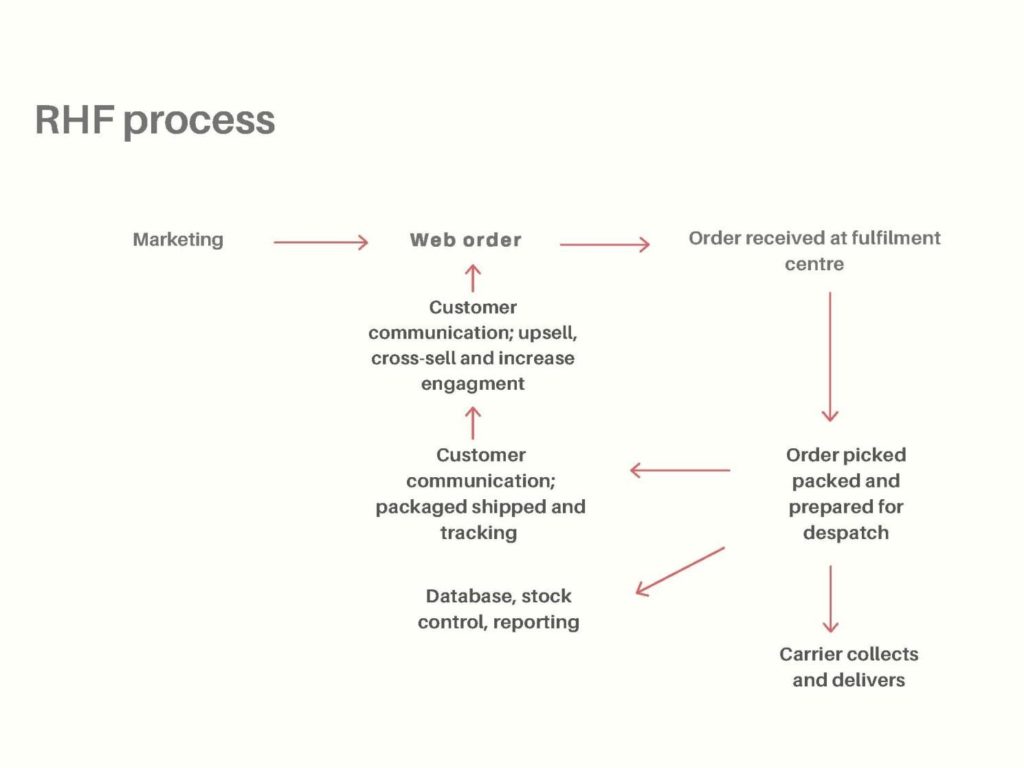Richard Price, Fruit Marketing
Growth in e-commerce has been accelerated by the Coronavirus pandemic. Pure play online retailers have benefitted while many others have offset downturns in other channels by focussing more on online sales. According to ONS data, e-commerce accounted for 36% of all retail sales to end November 2020, up 67% year on year.
These changes are here to stay – even if the pandemic comes under control later this year. So how can small businesses begin to take advantage of the opportunity in e-commerce?
One source of help is the E-Channel project. It offers a joined-up package of support for SMEs looking to enter new markets using e-commerce (for more see https://www.e-channel.org)
A small part of this support is a series of articles on the key role of Response Handling and Fulfilment (RHF) in successful e-commerce. Over the coming weeks, we’ll highlight the key considerations when planning and implementing RHF services. In this first article we start with an overview of what we’ll be covering.

New market development means evaluating market demand, identifying and engaging prospects, understanding their purchase priorities, framing a proposition that fits and so converting them to customers. And all the while, delivering a great customer experience so they buy from you again.
Easier said than done! But researching the market, understanding ideal customer profiles and being clear that your proposition will satisfy them, are all important in planning for success and avoiding costly mistakes.
During planning, RHF may often be an afterthought compared to other elements earlier in the marketing/purchase cycle. But it plays such an important role in shaping the customer’s experience. Compelling acquisition communications and a great website mean nothing until the order is fulfilled.
Ask yourself questions about your supply chain – is it robust and scalable? Are there potential bottle-necks? Do I have a contingency?
If you have a clear brand purpose, think about RHF as the delivery of the promise and align the service levels of your RHF to reflect your vision and values. Considerations include response times, speed of delivery, carriers, packaging and returns.
A clear understanding of the key components of RHF will help you manage it and also appreciate the value offered by specialist partners.
With the process in mind, consider your desired service levels and which components are the most important. Is it cut-off times for same-day despatch? Or is a 48-hr turn-round ok? Is machine-packaging feasible or desirable? What about returns? Will your customer’s experience be good enough to prompt them to buy from you again or recommend you to others?

A small business may be tempted to go for an in-house solution to save on costs. If you have capability and capacity then this could be fine – particularly for low and steady volumes. But what about scaling up and managing peaks and troughs? It’s worth making a realistic objective comparison of internal versus external costs and benefits.
If you decide you need specialist support, how do you find the right partner to handle your responses and fulfil your orders? Amongst other things, you’ll need to consider location, warehousing, picking and packing capabilities, integration with e-commerce platforms, management and reporting, service levels, costs, and reputation.
We’ll hear from specialist agency The Distribution Solution (TDS) who have more than 20 years in RHF. TDS will provide best-practice guidance and a check-list of dos and don’ts based on client experiences across many different sectors, covering both domestic and overseas markets.
Whether you’re already involved in cross-border trade with the EU or considering testing EU markets with an e-commerce approach, you should be aware of the additional administration required following Brexit. As well as the paperwork, consider the implications of the end of Britain’s participation in the EU E-Commerce Directive. You should check for compliance with local regulations in each EEA jurisdiction – regarding online information, online advertising, online shopping and online contracts.
We’ll look at pricing – how important is free delivery and how can you factor it into your pricing? There’s also packaging – standard, bespoke, bubble wrap, gift wrap; we’ll consider the pros and cons as well as labelling and customer communications. What about collaborative opportunities – partnership marketing with complimentary brands via RHF? Then there are carrier options – which despatch companies should you look at and why? There’s also the ubiquitous issue of data protection and privacy – what are the ramifications for GDPR post Brexit? And we’ll include useful sources of further information wherever we can.
For more information about E-Channel and how to take part, visit https://www.e-channel.org call 01752 764400
or email info@e-channel.org